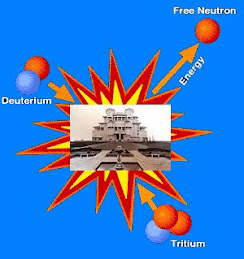Nama Dosen :
1. Dra. Wiendartun, M.Si
2. Dra. Heni, M.Si.
3. Drs. Yuyu R. Tayubi, M.Si.
Pustaka :
1. Kittel Charles, Introduction to Solid State Physics 7th.ed, 1996, John Wiley & Sons, New York
2. Ashcroft and Mermin, Solid State Physics, 1976, Saunders College , Philadelphia.
Standar Kompotensi :
I. DESKRIPSI
Perkuliahan ini merupakan pendalaman dari kuliah siklus pertama (Fisika Modern) serta sebagai dasar untuk mengambil matakuliah Fisika Zat Padat Kompetensi yang diharapkan adalah memiliki wawasan yang memadai dan menguasai pengetahuan mengenai Pendahuluan Fisika Zat Padat, serta dapat sesuai dengan perkembangan sains dan teknologi. Perkuliahan ini membahas konsep Fisika yang meliputi :. struktur kristal, difraksi sinar- x oleh kristal, ikatan kristal, vibrasi kristal , sifat thermal kristal, gas electron bebas, teori pita energi, kristal semikonduktor, superkonduktivitas dan sifat kemagnetan zat padat Perkuliahan ini merupakan pilihan wajib untuk program nondik serta matakuliah pilihan untuk program dik. Perkuliahan disampaikan melalui metoda : ceramah, tanya jawab , diskusi, simulasi dan experimen dengan pendekatan pemecahan masalah. Evaluasi dilakukan melalui test dan non test.
II. SILABUS
1. Identitas Matakuliah
a. Nama Matakuliah : Pendahuluan Fisika Zat Padat
b. Kode Matakuliah : FI 362
c. Jumlah SKS : 3
d. Semester : Ganjil/Genap
e. Kelompok Matakuliah : MKPP ( Matakuliah Perluasan dan Pendalaman)
f. Program studi : Dik / Non-Dik
g. Status Matakuliah : Pilihan
h. Prasyarat : Fisika Modern, Statistik,Kuantum
i Dosen : WD, YRT,HR
2. Tujuan :
Selesai mengikuti perkuliahan ini mahasiswa diharapkan memiliki wawasan dan menguasai pengetahuan mengenai, struktur kristal, difraksi sinar- x oleh kristal, ikatan kristal, vibrasi kristal , sifat thermal kristal, gas electron bebas, teori pita energi, kristal semikonduktor, superkonduktivitas dan sifat kemagnetan zat padat serta dapat mengaplikasikannya sesuai dengan perkembangan sains dan teknologi.
3. Deskripsi isi :
Materi yang dibahas dalam perkuliahan ini meliputi : struktur kristal, difraksi sinar- x oleh kristal, ikatan kristal, vibrasi kristal , sifat thermal kristal, gas electron bebas, teori pita energi, kristal semikonduktor, superkonduktivitas dan sifat kemagnetan zat padat.
4. Pendekatan / metoda pembelajaran :
Ceramah,tanya jawab , diskusi, simulasi dan experimen dengan pendekatan pemecahan masalah.
5. Media Pembelajaran:
OHT, pwr point,demonstrasi.
6. Evaluasi:
Kehadiran , tugas
Quiss , Test Unit-1, test Unit 2 dan test Unit 3.
7. Materi perkuliahan :
7.1. Pertemuan ke -1 : Struktur kristal
7.2. Pertemuan ke -2 : Struktur kristal
7.3 Pertemuan ke -3 : Difraksi sinar- x oleh kristal
7.4 Pertemuan ke -4 : Difraksi sinar- x oleh kristal
7.5 Pertemuan ke -5 : Ikatan Kristal
7.6 Pertemuan ke -6 : Vibrasi Kristal
7.7 Pertemuan ke -7 : Vibrasi Kristal
7.8 Pertemuan ke -8 : Test Unit - I
7.9 Pertemuan ke -9 : Sifat Thermal Kristal
7.10 Pertemuan ke-10 : Sifat Thermal Kristal
7.11 Pertemuan ke-11 : Gas electron bebas
7.12 Pertemuan ke-12 : Teori Pita Energi
7.13 Pertemuan ke-13 : Kristal semikonduktor
7.14 Pertemuan ke-14 : Superkonduktivitas
7.15 Pertemuan ke-15 : Sifat kemagnetan zat padat
7.16 Pertemuan ke-16 : Test Unit - II
8. Buku Sumber :
8.1. Buku Utama :
Kittel Charles, Introduction to Solid State Physics 6th, 1991, John Wiley & Sons, New York
8.2. Referensi :
8.2.1. Ashcroft and Mermin, Solid State Physics, 1976, Saunders College , Philadelphia
8.2.2. M.A.Oemar, Fundamental of Solid State Physics, 1977, Addison Wesley, USA.
8.2.3. Adrianus J Dekker, Solid State Physics, 1978, Maruzen company LTD, Japan
8.2.4. H.M.Rosenberg, The Solid State Physics Third Edition, 1987, Oxford Science Publications, USA.
8.2.4. Christman, Introduction to Solid Physics, 1989, John Wiley & Sons, USA.
Introduction to Solid State Physics
Solid-state physics is the study of rigid matter, or solids, through methods such as quantum mechanics, crystallography, electromagnetism and metallurgy. It is the largest branch of condensed matter physics. Solid-state physics studies how the large-scale properties of solid materials result from their atomic-scale properties. Thus, solid-state physics forms the theoretical basis of materials science. It also has direct applications, for example in the technology of transistors and semiconductors.Background
Solid materials are formed from densely-packed atoms, which interact intensely. These interactions produce the mechanical (e.g. hardness and elasticity), thermal, electrical, magnetic and optical properties of solids. Depending on the material involved and the conditions in which it was formed, the atoms may be arranged in a regular, geometric pattern (crystalline solids, which include metals and ordinary water ice) or irregularly (an amorphous solid such as common window glass).
The bulk of solid-state physics theory and research is focused on crystals. Primarily, this is because the periodicity of atoms in a crystal — its defining characteristic — facilitates mathematical modeling. Likewise, crystalline materials often have electrical, magnetic, optical, or mechanical properties that can be exploited for engineering purposes.
The forces between the atoms in a crystal can take a variety of forms. For example, in a crystal of sodium chloride (common salt), the crystal is made up of ionic sodium and chlorine, and held together with ionic bonds. In others, the atoms share electrons and form covalent bonds. In metals, electrons are shared amongst the whole crystal in metallic bonding. Finally, the noble gases do not undergo any of these types of bonding. In solid form, the noble gases are held together with van der Waals forces resulting from the polarisation of the electronic charge cloud on each atom. The differences between the types of solid result from the differences between their bonding.
Solid State Physics
Lectures by:
Department of Physics and Astronomy, University of Delaware, U.S.A.
Instructor: Dr. Branislav K. Nikolic
Contact: Email: bnikolic@physics.udel.edu Phone: (302) 831-2943 Fax: (302) 831-1637.
Class mailing list: PHYS624-010-05F@udel.edu
Instructor Information: I am a condensed matter theorist, currently focused on spintronics, mesoscopic physics, quantum chaos, and quantum information science. See the home page of Quantum Transport Theory Group or of my Teaching for more information.
Course Prerequisites: Familiarity with single-particle Quantum Mechanics and Statistical Mechanics of non-interacting bosons and fermions.
Ex Cathedra Lectures:
- Crystalline Solids: Symmetry and Bonding
- Experimental Determination of Crystal Structures
- Electronic Band Structure of Solids
- Quick and Dirty Introduction to Mott Insulators
- Crystal Lattice Vibrations: Phonons
- Thermal Properties of Crystal Lattices
- Semiclassical Electron Transport
- Quantum Transport in Mesoscopic Nanostructures
- Review of Quantum Mechanics
- Review of Statistical Mechanics
Notes:
- Many-Body Physics: Unfinished Revolution (popular article)
- Notes on Density Functional Theory
- Pedagogical Examles of Using Character Tables of Point Groups
- Quantum Phase Transitions (popular article)
- Understanding the Chemical Potential
- Visualizing the Phonon Wave Function
- Quantum statistics: Is there an effective fermion repulsion or boson attraction?
HTML:
- Order Parameters, Broken Symmetry, and Topology
- WebElements
- Character Tables
- Crystal Lattice Structures
- Periodic Table of Fermi Surfaces
- Nucleic Acid Database
- Protein Data Bank
- DFT and Local Density Approximation
- Fat Schrödinger's cat (2-level MQC system)
- Introduction to Modern Solid State Physics
Computer Experiments
JAVA Applets:
Electrons:
- Fermi Surfaces
- Fermi Function
- Density of States
- Density of States: Free electrons vs. Tight-binding
- Structure Factor
- Two-dimensional lattice: Real and reciprocal space
- Electrons in a 2D lattice: Energy contours and density of states
- Quasicrystals
- Carbon Nanotubes
Phonons:
- Normal modes of coupled oscillators
- Phonon dispersion: Diatomic Lattice
- Fourier Series Java Applet
- Fourier Transform Java Applet
Experimental Techniques
Complex Systems:
Animation:
Computer Algebra Lectures:
- mini TEST
- Homework 1 (due 09/22)
- Homework 2 (due 10/13)
- Homework 3 (due 10/13)
- Homework 4 (due 10/20)
- Project 1 (due 12/09)
- Homework 5 (due 11/15)
- Homework 6 (due 12/01)
- Homework 7 (due 12/08)
- Solution to Problem 1. of Homework 2 (Maple Worksheet)
- Fourier Analysis in Solid State Physics
- Solution to Problem 1. and Problem 3. of Homework 3 (PDF)
- Hint (Fourier Transform for solving integro-differential equations) for Problem 1. of Homework 6 (PDF)
Faculty

Professor of Physics, UC Berkeley, since 1951, Emeritus since 1978.B.A. from Cambridge University, England, 1938; Ph.D. from University of Wisconsin, 1941. Research Physicist at MIT, 1945-47; Research Physicist at Bell Telephone Laboratories, 1947-51; Guggenheim Fellow, 45 (post-service MIT), 1957 (Hawaii), 1965 (ENS, Paris); Miller Fellow, 1960-62. Recipient of the Buckley Prize for Solid State Physics, 1957; Oersted Medal, American Association of Physics Teachers, 1972; Berkeley Distinguished Teacher Award, 1970. Fellow, American Academy of Arts and Sciences; member, National Academy of Sciences. Author: Introduction to Solid State Physics, 1st ed. 1953 - 7th ed. 1996, Quantum Theory of Solids, 1963, and (with C. Y. Fong) 1987, Thermal Physics, 1969 and (with H. Kroemer) 1980.
Research: Condensed Matter Physics And Materials Science
Fax: (510) 643-9473
Email: kittel@berkeley.edu
Catatan:
Laman ini terus mengalami perbaikan.





Tidak ada komentar:
Posting Komentar